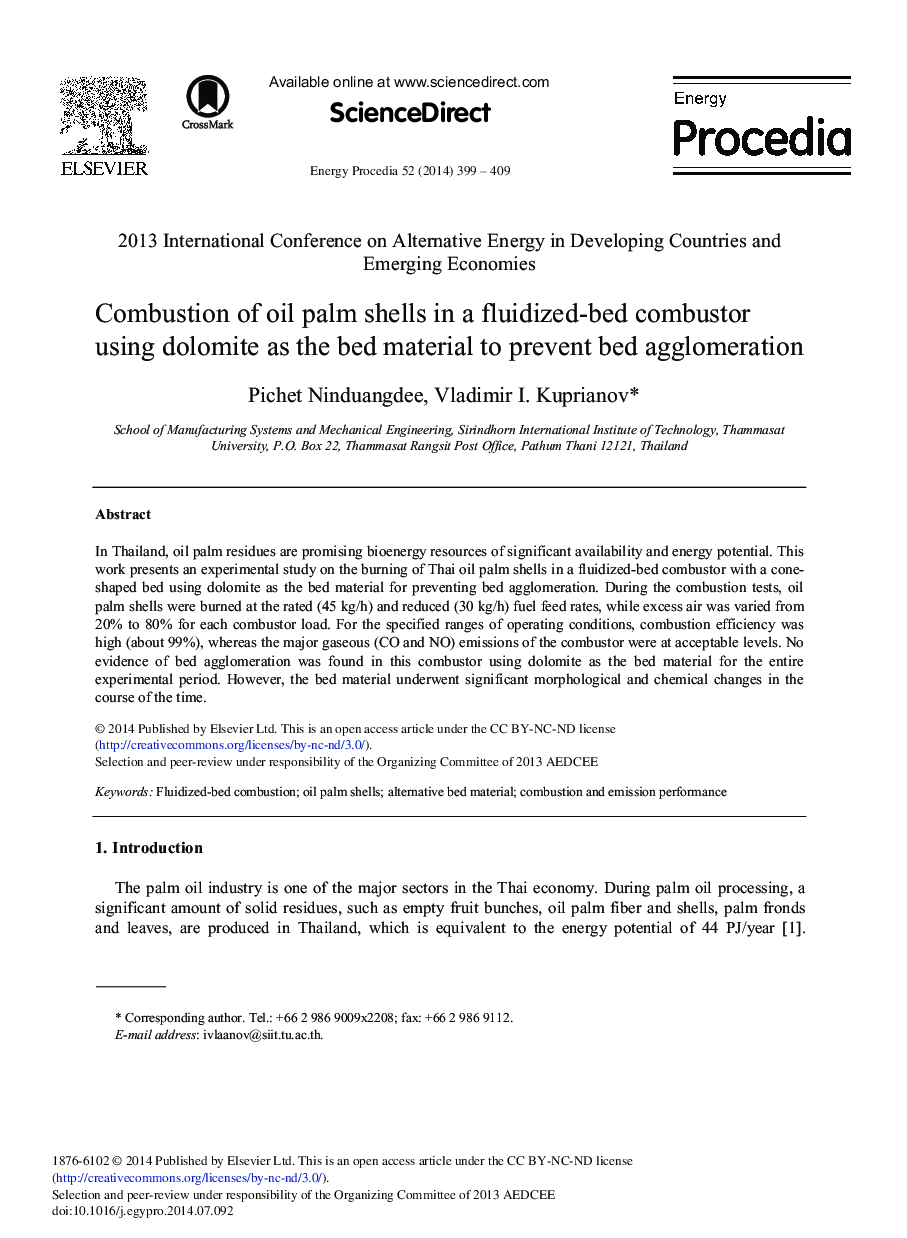| Article ID | Journal | Published Year | Pages | File Type |
|---|---|---|---|---|
| 1511296 | Energy Procedia | 2014 | 11 Pages |
In Thailand, oil palm residues are promising bioenergy resources of significant availability and energy potential. This work presents an experimental study on the burning of Thai oil palm shells in a fluidized-bed combustor with a cone- shaped bed using dolomite as the bed material for preventing bed agglomeration. During the combustion tests, oil palm shells were burned at the rated (45 kg/h) and reduced (30 kg/h) fuel feed rates, while excess air was varied from 20% to 80% for each combustor load. For the specified ranges of operating conditions, combustion efficiency was high (about 99%), whereas the major gaseous (CO and NO) emissions of the combustor were at acceptable levels. No evidence of bed agglomeration was found in this combustor using dolomite as the bed material for the entire experimental period. However, the bed material underwent significant morphological and chemical changes in the course of the time.
